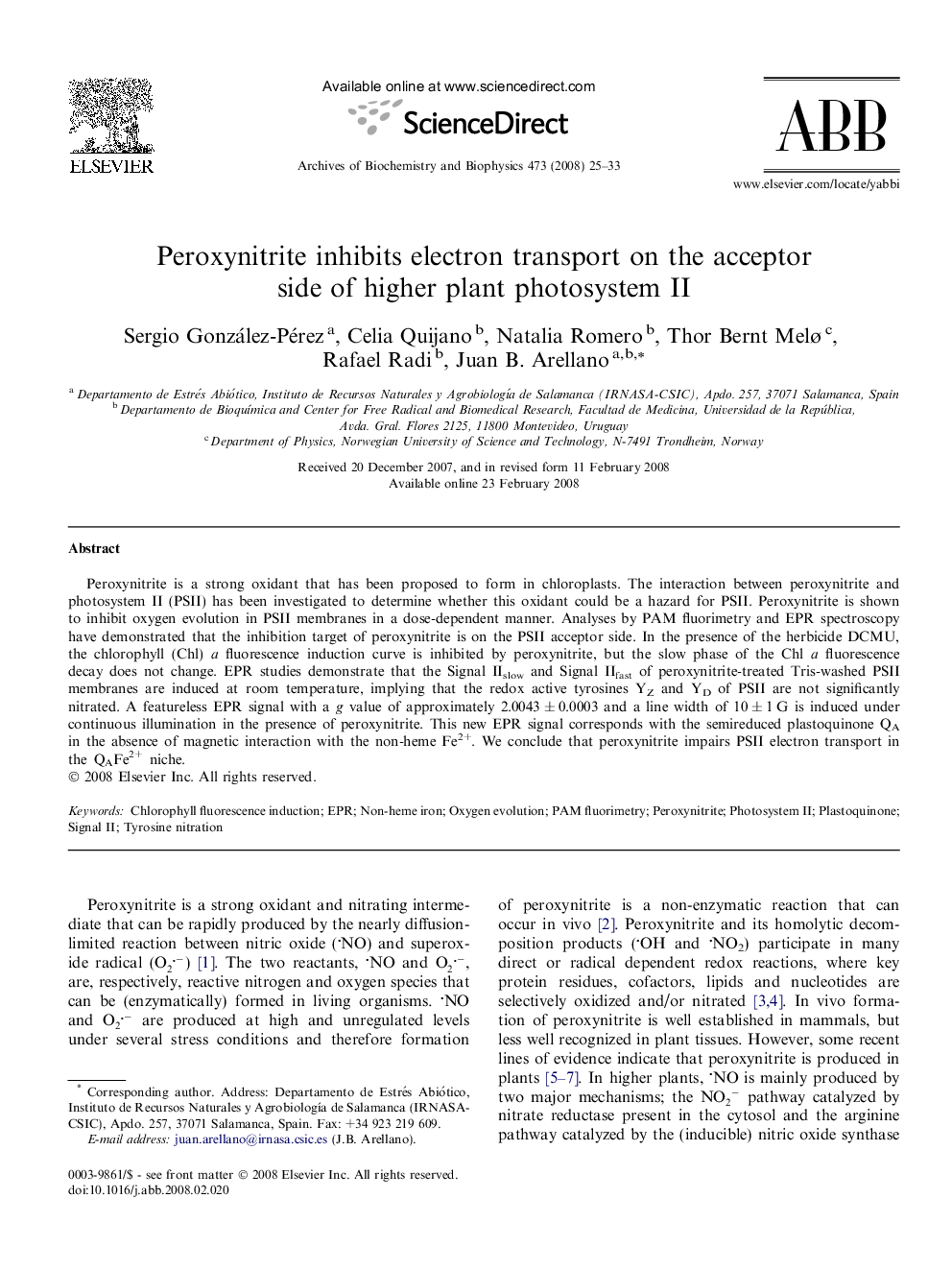| Article ID | Journal | Published Year | Pages | File Type |
|---|---|---|---|---|
| 1926686 | Archives of Biochemistry and Biophysics | 2008 | 9 Pages |
Peroxynitrite is a strong oxidant that has been proposed to form in chloroplasts. The interaction between peroxynitrite and photosystem II (PSII) has been investigated to determine whether this oxidant could be a hazard for PSII. Peroxynitrite is shown to inhibit oxygen evolution in PSII membranes in a dose-dependent manner. Analyses by PAM fluorimetry and EPR spectroscopy have demonstrated that the inhibition target of peroxynitrite is on the PSII acceptor side. In the presence of the herbicide DCMU, the chlorophyll (Chl) a fluorescence induction curve is inhibited by peroxynitrite, but the slow phase of the Chl a fluorescence decay does not change. EPR studies demonstrate that the Signal IIslow and Signal IIfast of peroxynitrite-treated Tris-washed PSII membranes are induced at room temperature, implying that the redox active tyrosines YZ and YD of PSII are not significantly nitrated. A featureless EPR signal with a g value of approximately 2.0043 ± 0.0003 and a line width of 10 ± 1 G is induced under continuous illumination in the presence of peroxynitrite. This new EPR signal corresponds with the semireduced plastoquinone QA in the absence of magnetic interaction with the non-heme Fe2+. We conclude that peroxynitrite impairs PSII electron transport in the QAFe2+ niche.
